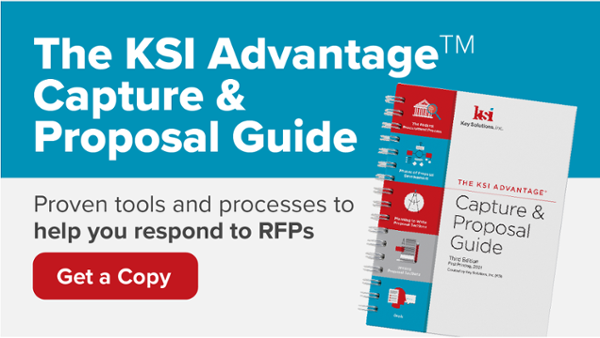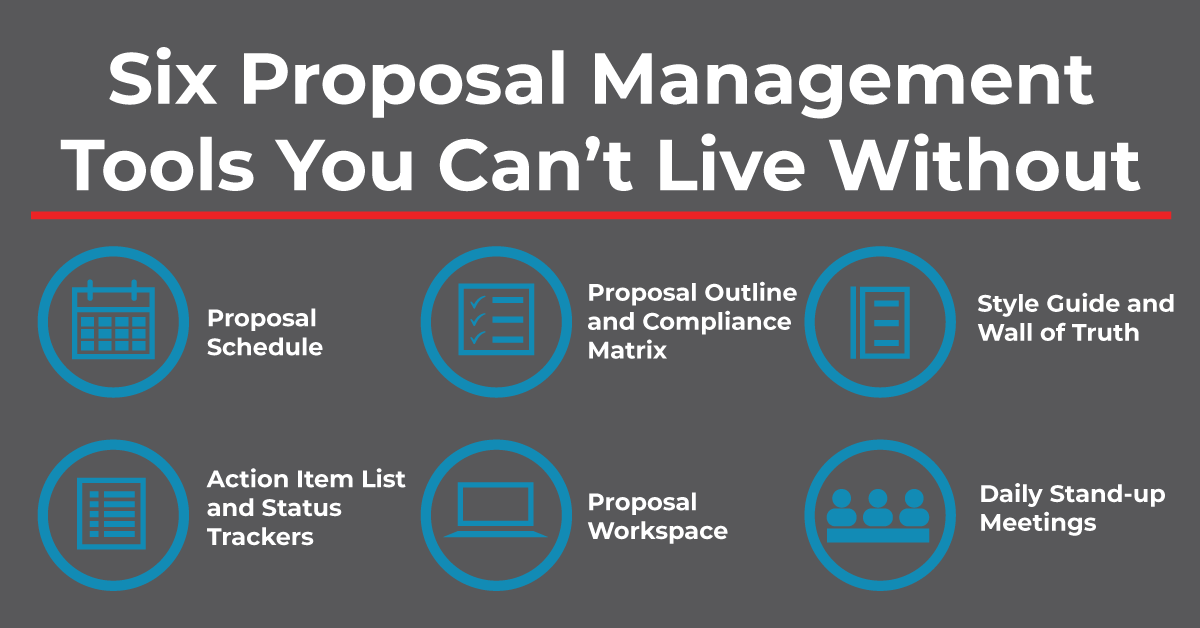One of the most crucial phases in the federal business development lifecycle is Capture.
The Business Development (BD) account manager identifies and qualifies opportunities, while a Proposal Manager is responsible for preparing the proposal response.
But what happens in between opportunity identification and proposal submittal? Turns out there are a lot of activities that need to occur to ensure a pursuit stays on track. This is where the role of a capture manager comes in.
You may be asking yourself, “What is capture, and why do I need a capture manager?”
Capture is arguably the most valuable phase in the BD lifecycle. During capture, a company focuses on strategy development; this is the phase where you blend your BD team's understanding of the customer (their operating environment, pain points, ideal end state) and you map that intelligence into your proposal's technical, management, and pricing approaches.
Our KSI Advantage© proposal process starts with building a solid foundation by gaining customer and opportunity knowledge and then forming a strong win strategy in the Capture phase.
The KSI Advantage© Opportunity Lifecycle Overview.  A more detailed opportunity lifecycle overview is available in our KSI Advantage© Capture & Proposal Guide.
A more detailed opportunity lifecycle overview is available in our KSI Advantage© Capture & Proposal Guide.
In the Capture phase there are quite a few moving parts that need to be sequenced and coordinated, and many individuals from across the company may be involved with these activities. The leadership provided from an individual designated as a capture manager ensures a pursuit team stays on track and focused on content development that will improve your chances of winning.
What is a capture manager?
A capture manager is a strategic role focused on supporting a company's long term positioning in the marketplace. He/she works with internal and external stakeholders, such as: solution architects, program or delivery teams, pricing leads, and teaming partners, to name a few.
Capture management is separate and distinct from other phases of the BD lifecycle.
The capture manager is a team lead. He/she is responsible for gathering business intelligence and turns that data into actionable items for the pursuit. The capture manager organizes the pursuit team and leads them through the understanding of the goals of the opportunity, and the development of a solution that addresses the customer’s needs in a compelling way.
The capture manager also works with the proposal manager to share the artifacts that have been developed before an RFP is released. The capture manager bridges the introductory work of the BD account manager and helps the proposal manager prepare a compelling response. This role is key as it helps position the company internally and externally for sucessful program/contract implementation.
Typical Proposal Team Organization. Scale the proposal team organization to the size of the budget of procurement effort.

To be successful, a capture manager needs to have experience in marketing, corporate strategy, proposal development, financials, pricing strategies, contracts, project management, human resources, and anything else required for the bid.
Capture managers identify specific actions that need to be taken around each of these elements. Capture managers have many stakeholders, both internally and externally, who need to be part of a capture. Presenting at gate reviews helps keep internal stakeholders informed.
Capture Manager Role Description
Here are the key job responsibilities and qualifications of a capture manager.
Responsibilities
- Collects business intelligence and evaluates the customer analysis and the competitor analysis
- Performs internal analysis of your company's strengths and weaknesses, and uses this information to drive the company’s win strategy for an opportunity
- Develops the capture strategy and identifies actions that need to be taken to implement the capture strategy and plan
- Leads strategic capture efforts throughout the sales lifecycle
- Manage and direct various business functions through the capture process
- Present opportunities at each gate review to executive leadership
- Work across teams to develop solutions and meet client requirements
Qualifications
- Demonstrated analytical, reasoning, planning and problem-solving abilities
- Ability to work with executives and senior leadership
- Demonstrated skills in communicating technical information to non-technical and technical customers, as well as how core technologies translate into customers’ critical capabilities
- Excellent time-management, organizational, and record-keeping skills
- A high level of self-motivation
- Excellent written and verbal communication skills
IN CONCLUSION
Capture is a critical step that should not be skipped. The less information you have about the customer’s environment the more likely your proposed solution will not resonate with them. If capture is not performed at all, the proposal manager has a lot of ground to cover to be sure that customer information is included in the response, and no important items are missed.
To increase your chances of winning, assign a skilled capture manager to your major pursuits. A successful outcome is never guaranteed, but having a capture manager increases your chances of success exponentially.










